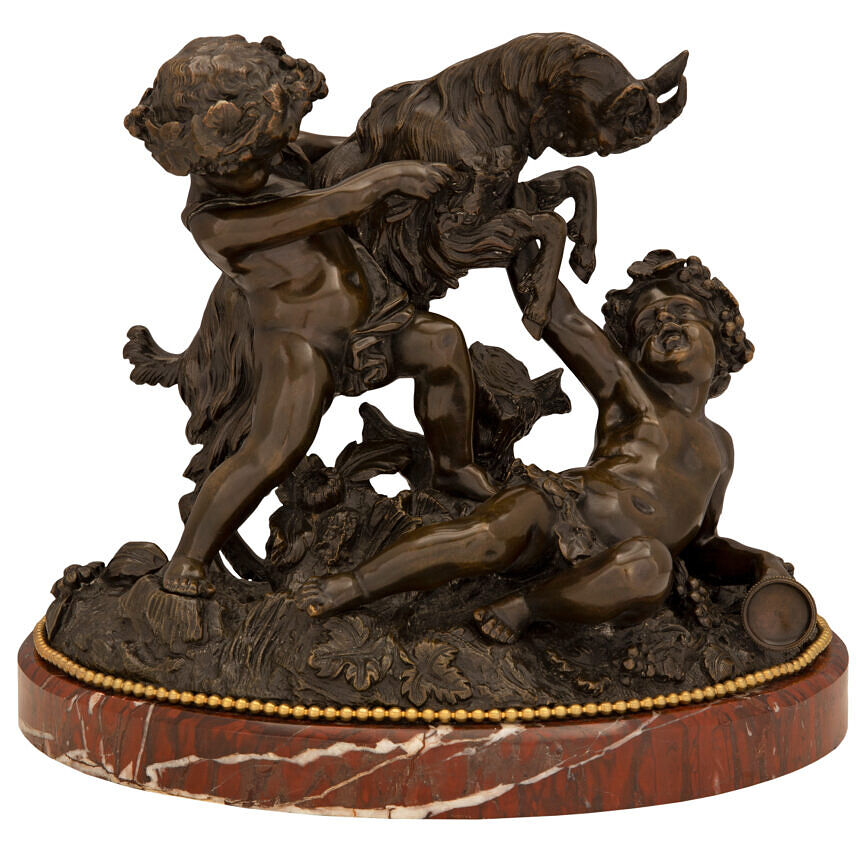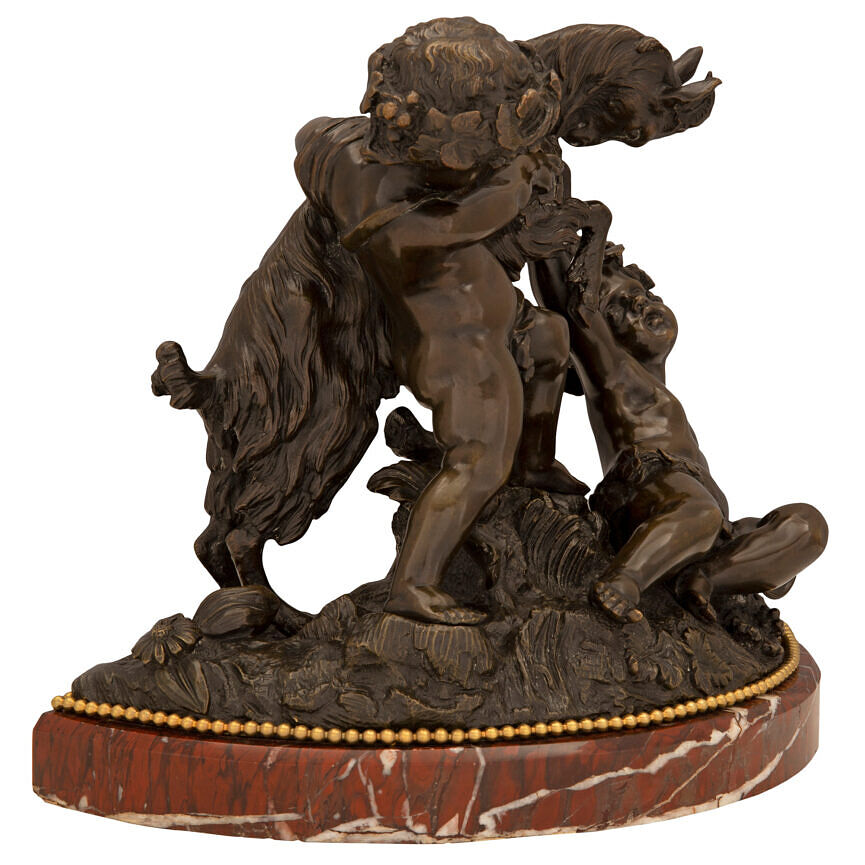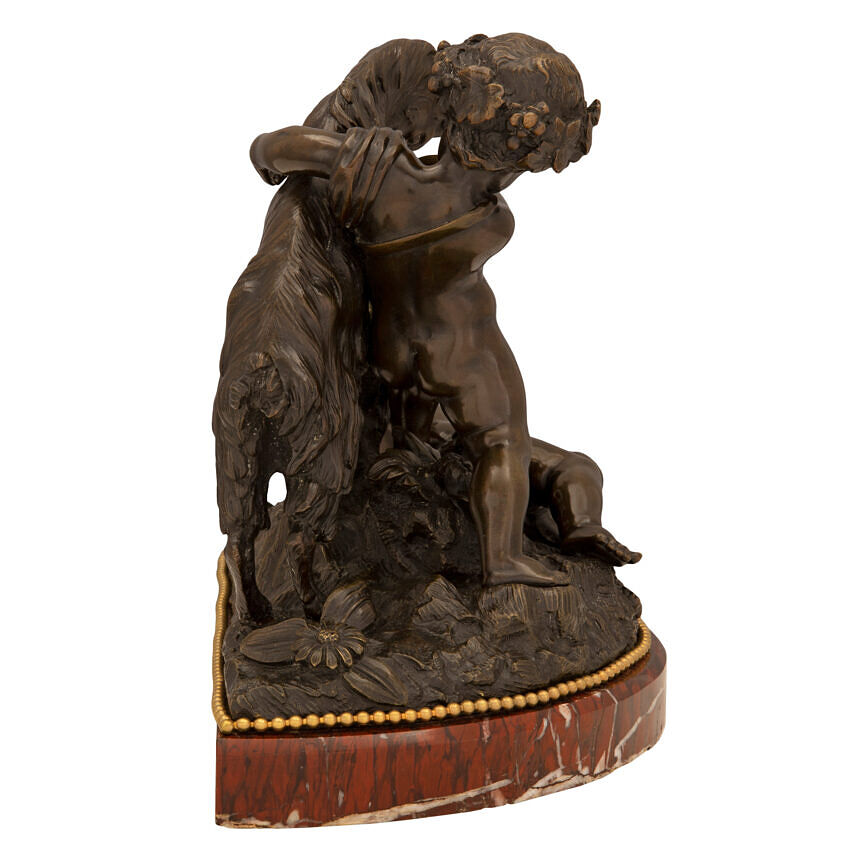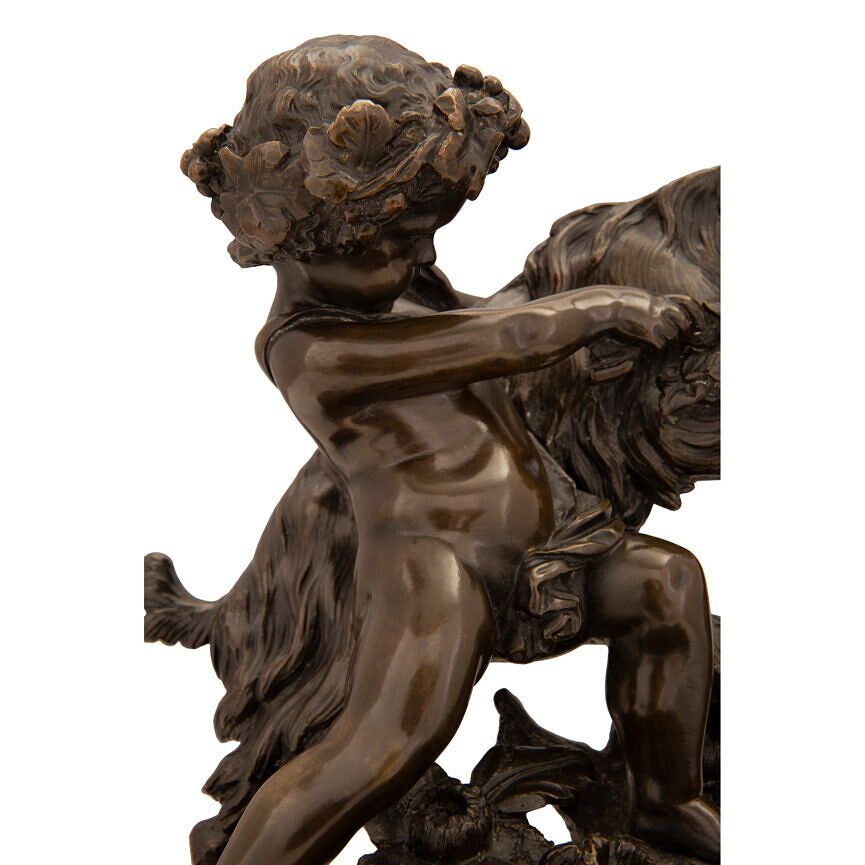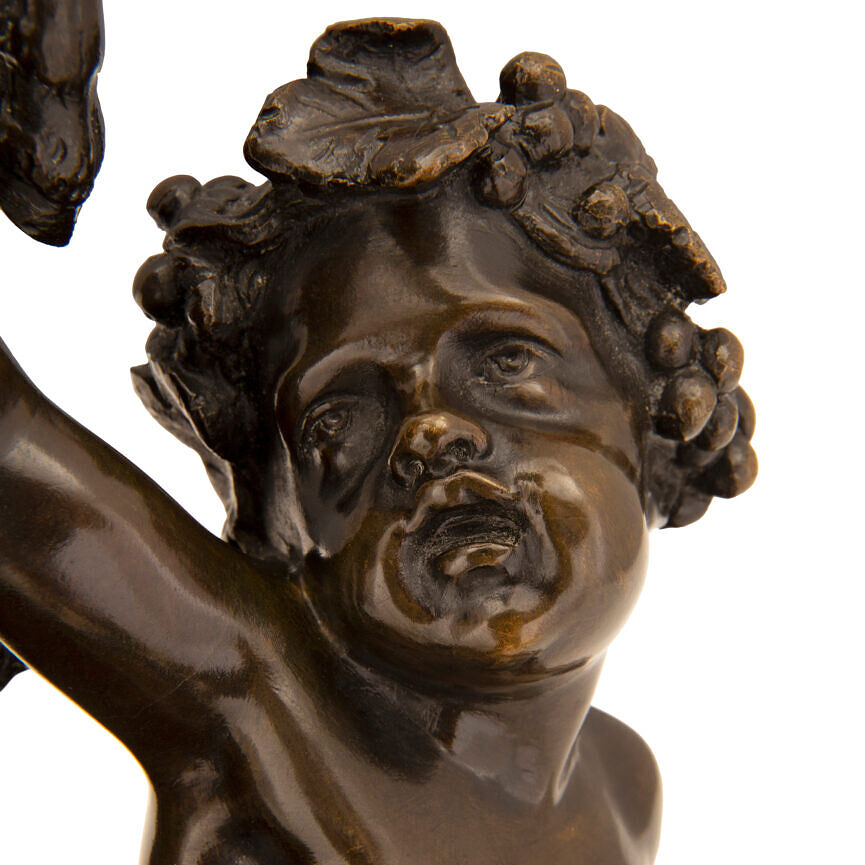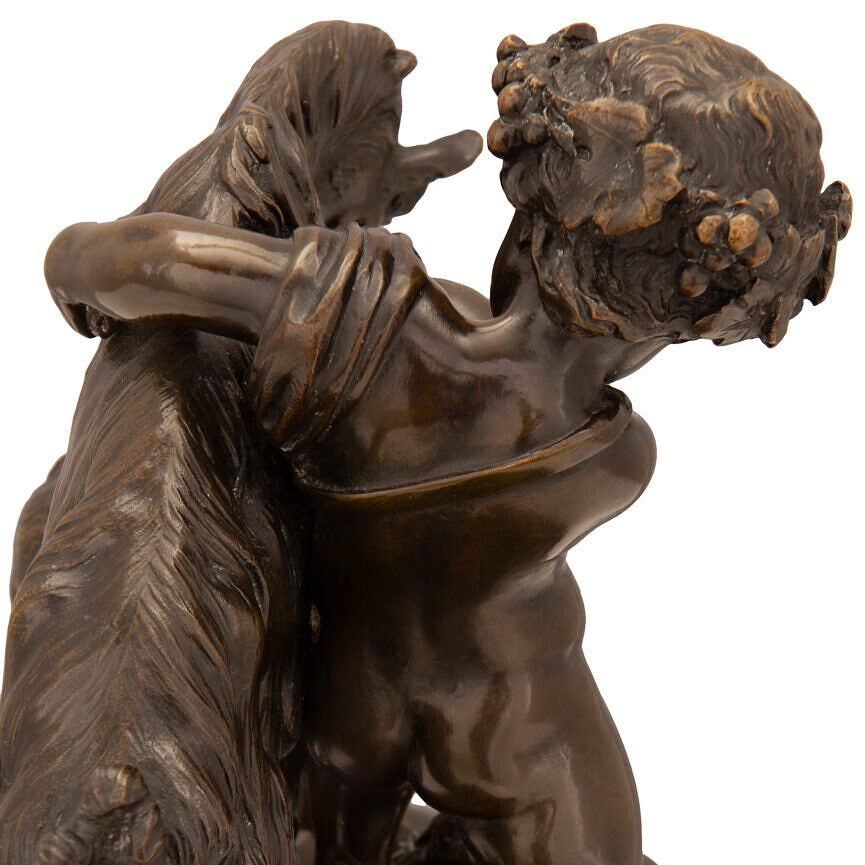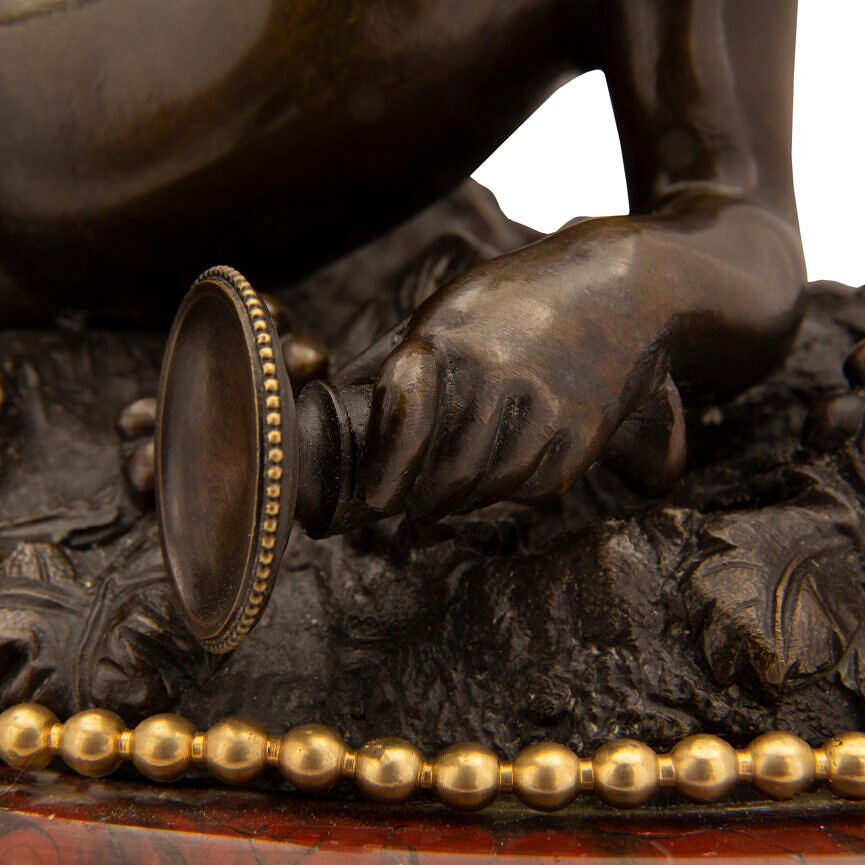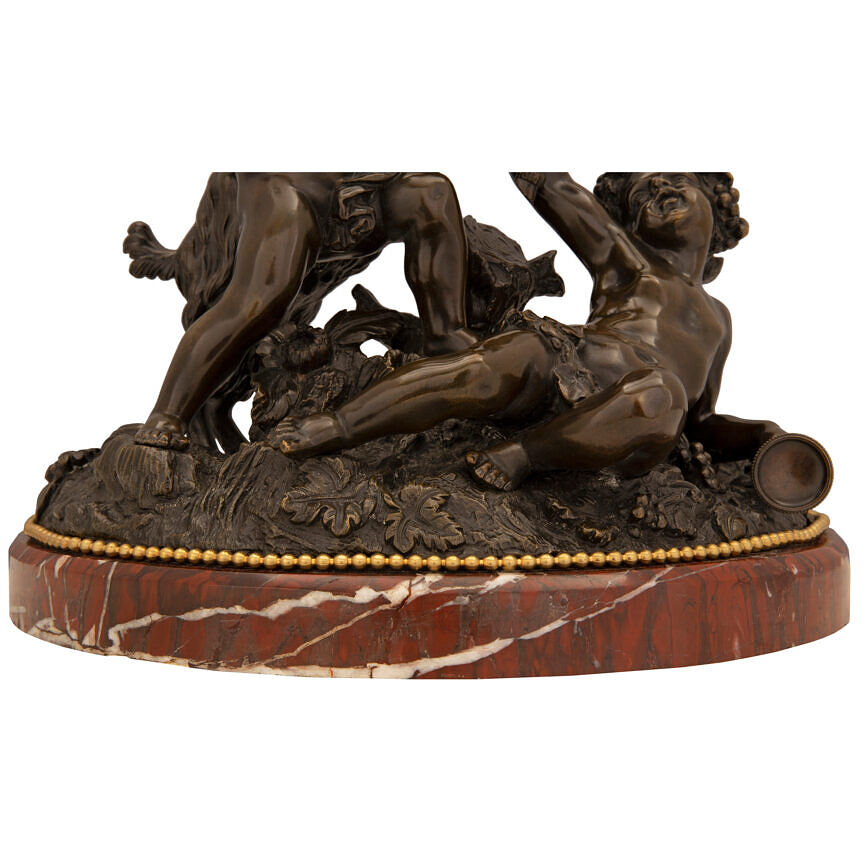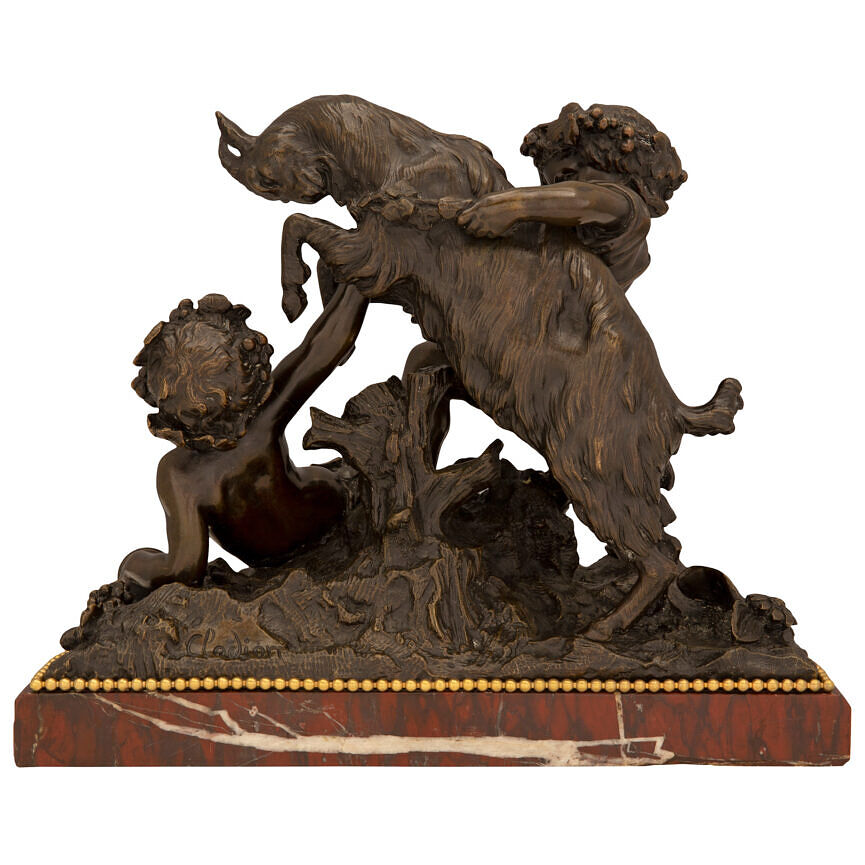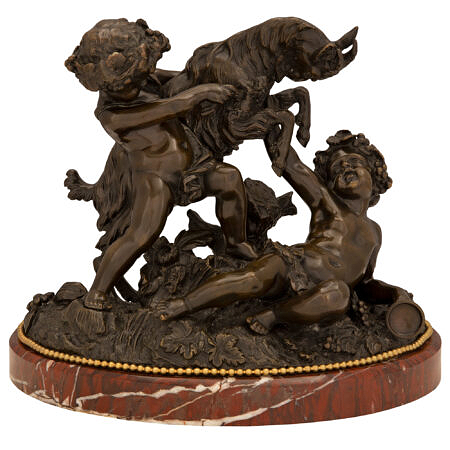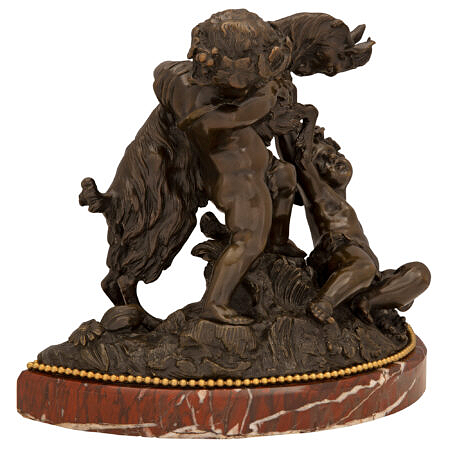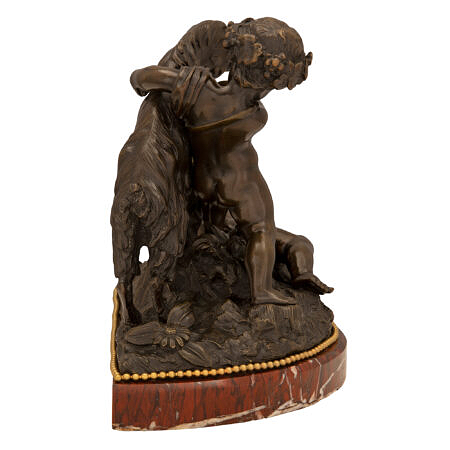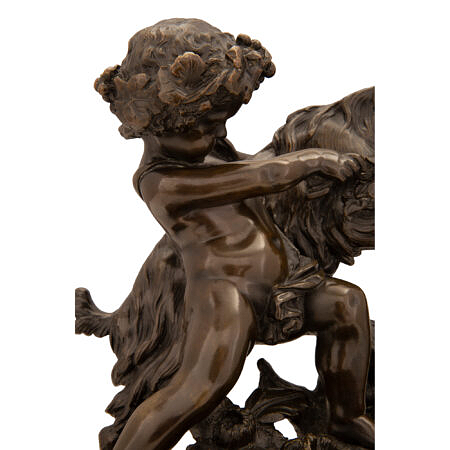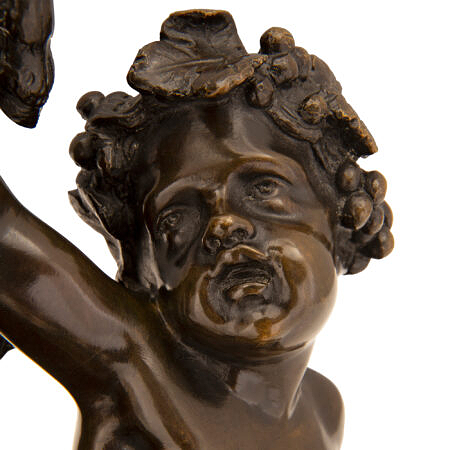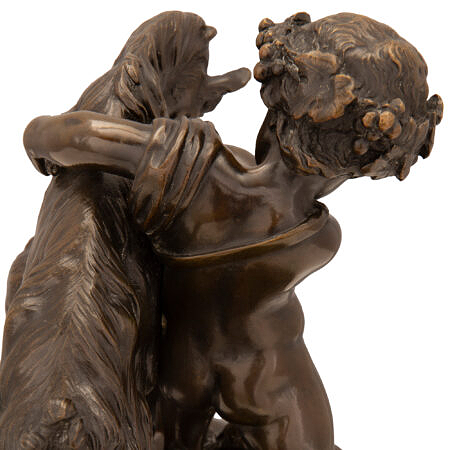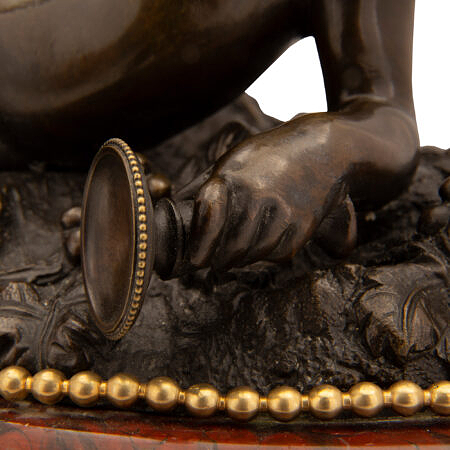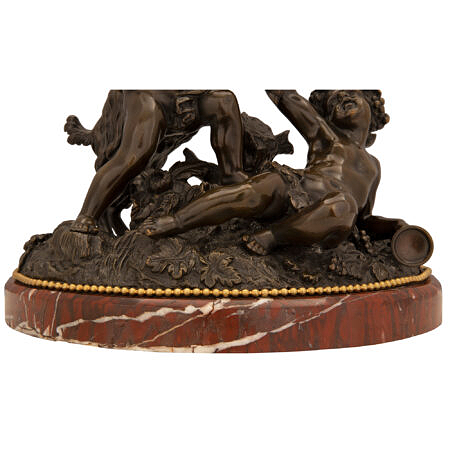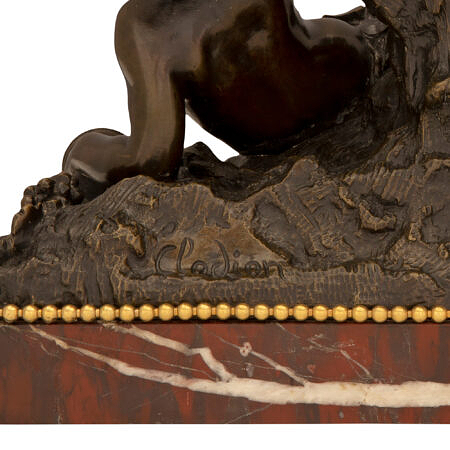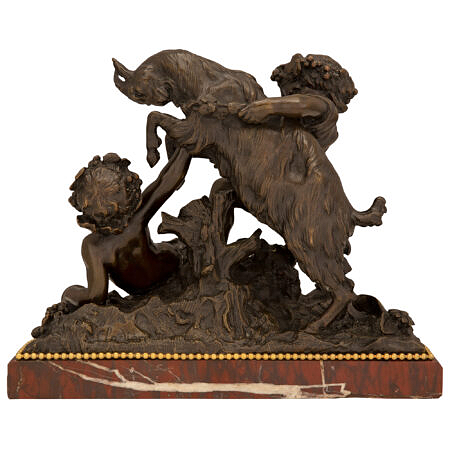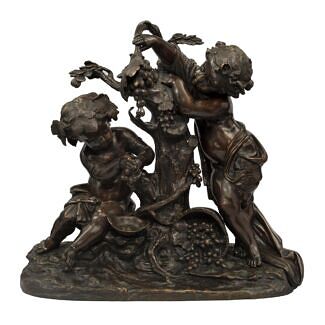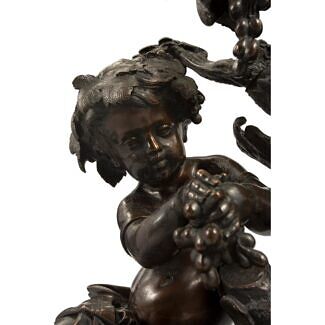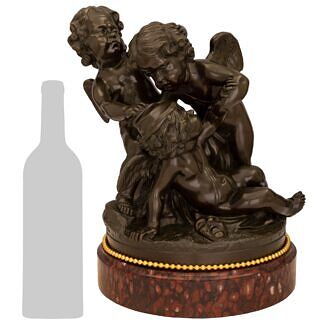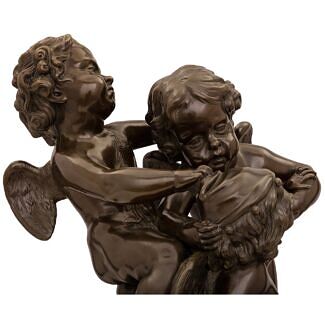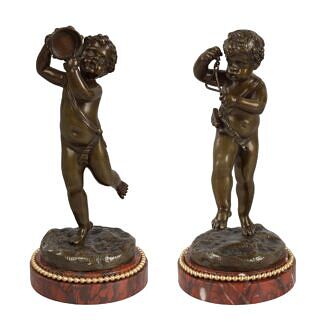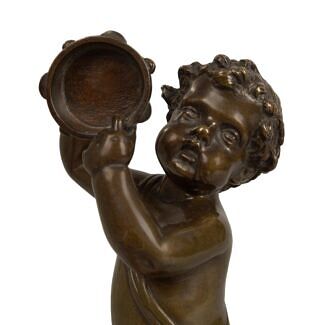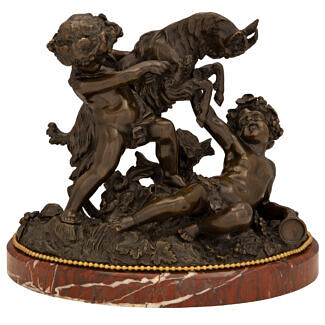A French 19th century Louis XVI st. patinated bronze, ormolu and Rouge Griotte marble statue, signed Clodion
On Hold
A sensational French 19th century Louis XVI st. patinated bronze, ormolu and Rouge Griotte marble statue, signed Clodion. The statue is raised by a demi lune shaped moulded Rouge Griotte marble base with a fine beaded ormolu band. Above are... — Read More
A sensational French 19th century Louis XVI st. patinated bronze, ormolu and Rouge Griotte marble statue, signed Clodion. The statue is raised by a demi lune shaped moulded Rouge Griotte marble base with a fine beaded ormolu band. Above are two charming bacchanalian cherubs with laurel garlands in their hair, draped in flowing fabrics and seemingly playing with a wonderfully detailed goat. One cherub lays at the front of the goat with his right hand holding up the goat and his left hand holding a chalice. The other cherub stands with his feet planted firmly on the ground while he rears back to support the goat with a richly chased laurel garland. The goat stands on its hind feet with it's front hooves raised in the air and his head leaning downward. Wonderful rich patina and exquisite attention to detail throughout. — Read Less
- Expires in:
- Item # 5301
-
H: 10.75 in L: 13 in D: 7 in
H: 27 cm L: 33 cm D: 18 cm
- France
- 19th Century
- Marble/Stone, Ormolu, Patinated Bronze
-
Louis XVI st. Read More
(Louis XVI st.) -
Also known as Louis Seize, Louis XVI's style is a style of architecture, furniture, decoration, and art created during Louis XVI’s 19-year reign in France, just before the French Revolution.
Thought to be a reaction and juxtaposition to the prior more elaborate styles, Louis XVI style developed at the end of the Baroque Period and continued until the birth of French Neoclassicism.
King Louis XVI showed little enthusiasm for the old world styles of the Baroque Period and he sought out a create a new “beau ideal” that focused on the purity and grandeur of Ancient Romans and Greeks.
Inspired by Ancient Roman architecture and art, distinct features of the Louis XVI style are linear lines, small repeated motifs, floral medallions hanging from ribbons, acanthus leaves, urns, dolphins, ram, and lion heads, and griffins.
Greco-Roman elements, often used in earlier and later French styles, were also quick common and included fluted and twisted columns, Caryathids, and corbels.
- Claude Michel Read More
Claude Michel, aka Clodion (1738 – 1814) Was a renowned French Master sculptor Born in Nancy, France. In 1755, Clodion went to Paris and was a pupil of J. B. Pigalle. In 1759 he obtained the grand prize for sculpture at the Académie Royale; in 1761 the silver medal for studies from models; and in 1762 he went to Rome. Catherine II of Russia was eager for him to go and stay in St Petersburg, but he returned to Paris. Among his patrons, were the chapter of Rouen, the states of Languedoc, and the Direction Générale. His works were frequently exhibited at the Salon. Among Clodion's works, that are displayed all over the world, are a statue of Montesquieu and a Dying Cleopatra, in the Victoria and Albert Museum, (London). One of his last groupings represented Homer as a beggar being driven away by fishermen (1810).
Claude Michel works may be seen at: the Art Institute of Chicago, the Bowes Museum (County Durham, UK), the Carnegie Museum of Art (Pittsburgh), the Courtauld Institute of Art (London), the Fine Arts Museums of San Francisco, the Frick Collection (New York City), the Getty Museum (Los Angeles), the Kimbell Art Museum (Texas), the Louvre (Paris), the Metropolitan Museum of Art, Musée Cognacq-Jay (Paris), the Museum of Fine Arts (Boston), Musée des Beaux-Arts (Bordeaux), Museum Boijmans Van Beuningen (Rotterdam), the National Gallery of Armenia, the National Gallery of Art (Washington.), the Norton Simon Museum (Pasadena) and the Philadelphia Museum of Art.
Payment Plan Option Learn More Choose the payment plan option at checkout and customize this payment option with our team. Payment plans are flexible and items will ship once all payments are received.


